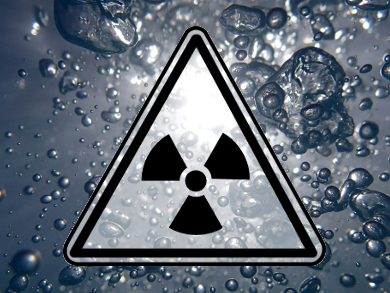Separating small amounts of uranium from water has long been a challenge. Finding solutions is of interest not only for nuclear waste management for power plants, hospitals, research facilities, and in case of a nuclear disaster, but also for capturing unconventional sources of uranium. Seawater, with an average of 3.3 ppb, is the largest source of uranium. Its total uranium reserve is estimated at 4.5 billion tons.
Wei-xian Zhang and Lan Ling, Tongji University, Shanghai, China, have separated uranium from water with spherical, zero-valent iron nanoparticles. In batch experiments with uranium concentrations ranging from 2 to 883 µg/L, uranium was removed nearly completely from the water within 2 minutes, with remaining concentrations below 1 µg/L. During removal, UVI is reduced to UIV and encapsulated at the center of the nanoparticles.
The uranium removal capacity is 2.4 g of uranium per gram of iron, which is much larger than that of conventional metal oxides and polymeric sorbents, which have been used for uranium extraction from water so far. The iron nanoparticles can be effectively recovered from water with a common magnet. Therefore, the nanoparticles can be separated, recycled, and reused at high efficiency.
- Enrichment and Encapsulation of Uranium with Iron Nanoparticle,
Lan Ling, Wei-xian Zhang,
J. Am. Chem. Soc. 2015.
DOI: 10.1021/ja510488r




